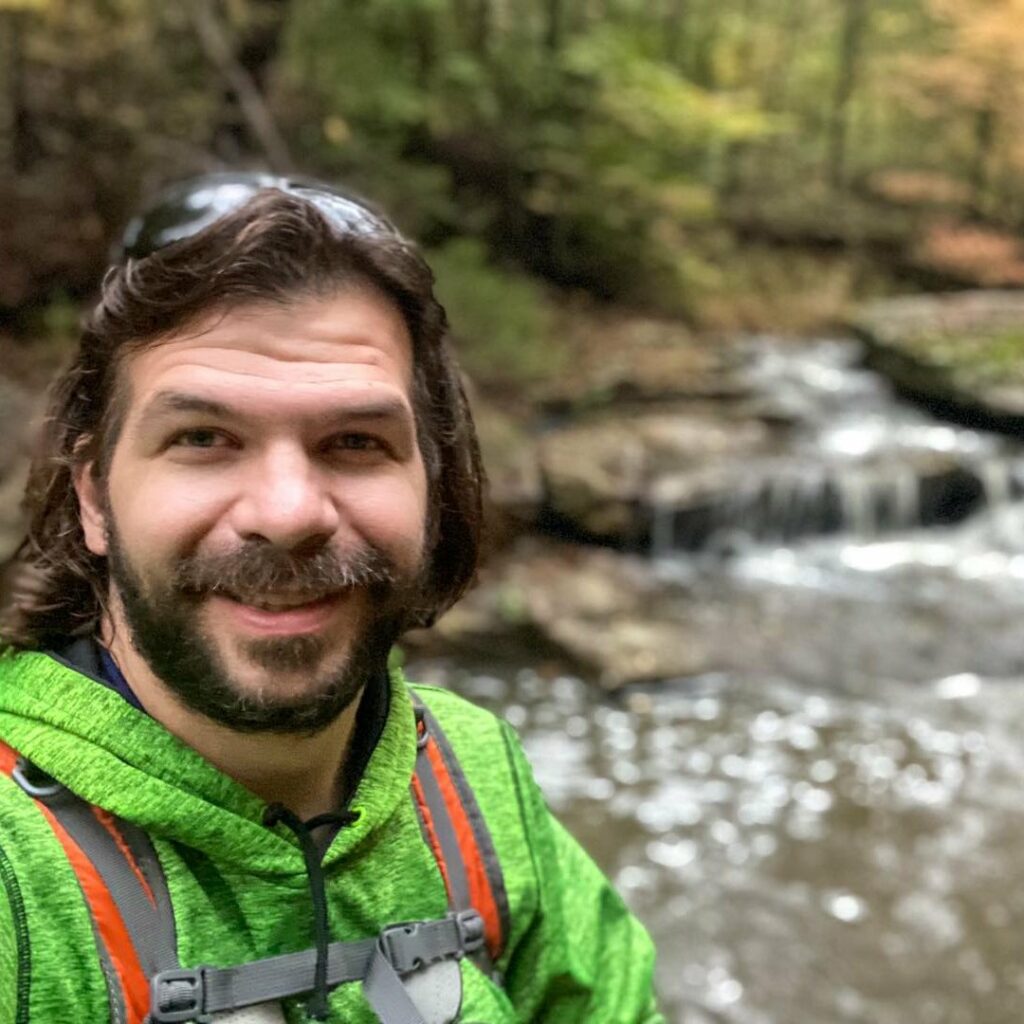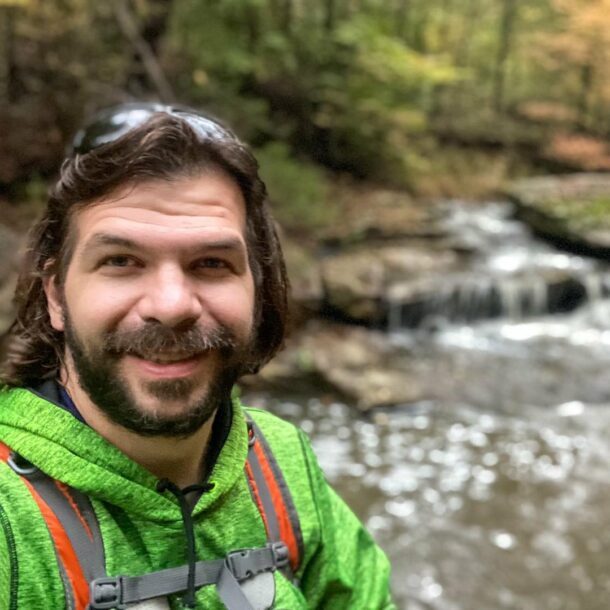How to
Dress in Layers
for
Hiking in the Cold
Hiking in cold weather doesn’t have to be dreadful if you dress in layers before you go.
Layering up for cold-weather hiking will keep you comfortable in any temperature. Dressing in layers is one of the most used and effective forms of winter hiking comfort. Using a cold-weather layering process enables you to shed layers as needed. You take off a layer and regulate your body temperature when it gets too warm.
I will show you how I dress in layers when I hike in winter. My girlfriend Michelle and I will hike all winter long. Even when it is the coldest out, we will still hike. And while you might think that is crazy, we’re always quite comfortable because we utilize dressing in layers.
So, let’s jump into the art of layering up for cold-weather hiking, and I’ll show you how you can hike in any cold weather comfortably!
Dress in Layers: The Base Layer
The Base Layer is the first layer closest to your bare skin and often the most critical layer.
Keeping your skin warm and dry while hiking in cold weather is vital. If your skin becomes too warm, you start to sweat. Sweat can cause issues if it starts to freeze or makes you uncomfortable during freezing temperatures. It is essential that you prevent sweating when hiking in cold weather.
My base layer system is quite simple. Spandex. I wear non-insulated spandex tights like you would for running. The spandex wickers moisture from my skin and keeps me dry. The spandex compression helps warm my skin, mainly as it compresses my muscles. I also wear a lightweight spandex long-sleeve shirt. I then wear a pair of wool-based thin hiking socks.
When you dress in layers, you need to make sure your base layer is clothes that will remove moisture through the material they are made with.
Dress in Layers: The Insulating Layer
The Insulating Layer is there to retain heat and keep you warm during your cold-weather hiking experience.
The initial Base Layer provides some warmth, but its main objective is to keep moisture off your body. The insulating layer provides heat to keep your body warm from the cold temperatures you’re hiking in.
For me, it depends on the temperature. If it is frigid, I’ll usually wear a second pair of leggings, but ones that are insulated and sold for cold-weather running. I’ll wear them right over my non-insulated leggings. I wear hiking pants over them if I wear a second pair of leggings. My hiking pants are made for hiking. I usually wear a t-shirt over my spandex shirt and a hoodie over the t-shirt. If it is frigid, I’ll put on a pair of thicker wool socks (usually alpaca wool) over the thin wool socks. I always make sure I buy hiking boots one size larger for this reason (extra socks for insulation). And finally, I’ll throw on a beanie to keep my head and ears warm. I might also wear gloves and sometimes include a glove liner, pending on how cold it is.
When you dress in layers, make sure what you choose for the insulating layer is friendly for hiking. Synthetics are best because they wicker moisture. Cotton will hold water.
Dress in Layers: The Shell Layer
The Shell Layer is mainly reserved when you hike in wintry precipitation or rain during cold-weather hiking.
The shell layer is meant to resist moisture created by rain, snow, and ice. If the weather is cold without moisture in the air, you might only sometimes need an outer shell. But it is a good idea to pack an outer shell with you if you ever need it.
My shell layer mainly consists of a simple raincoat. I have a raincoat for hiking and biking activities. It is even reflective and has waterproof pockets. The hood provides a good defense for my head if the beanie isn’t good enough. I usually don’t wear rain pants. I do wear waterproof boots, however.
When you dress in layers, ensure your shell layer can withstand precipitation because that is pretty much what that layer is for the beginning.
What do I Dress in Layers with?
You might be wondering what products I use to dress in layers with. I’ll list them below. I’ve used these products for a long time and recommend you check them out:
Base Layer:
- Thorlos Hiking Socks – These have been my favorite hiking socks. I usually buy a pair each year or ask for them for Christmas. I’ve compared them to Smart Wool and Darn Tough and found them to fit better and provide more comfort.
- Triumph Unpadded Tights – These are from an American company called Aero Tech Designs. They’re lightweight, thin, made with wicking materials, and super comfortable. The pair I used was bought about six years ago and is still new.
- Baleaf Long-Sleeve Running Shirt – This is a nice cheap but good-quality running shirt that will wicker moisture from your body. It is also a little baggier, which I like because I don’t like it tight around my neck.
Insulating Layer:
- Baleaf Insulated Leggings – These are insulated and have a higher waist which I find comfortable during colder weather. They’re made for running, so you can wear them alone or for running. They have pockets that will fit a phone. They’re super warm and affordable!
- 11 Taclite Pro Ripstop Pants – These are my main hiking pants. They’re super comfortable and durable, and for the 5.11 brand, they’re not that expensive. They have all kinds of pockets on them, too.
- T-Shirt & Hoodie – It doesn’t matter what t-shirt and hoodie you wear. I suggest getting ones that are made for athletic use. Usually, they’re a bit more expensive but are made with materials that help to remove moisture which is essential when it’s cold out.
- National Park Geek Beanie – I got my latest beanie from the National Park Geek. I will always suggest you buy stuff like this from an outdoor retailer to support their efforts and yours for being an outdoor lover.
- Gloves and Glove Liners – I usually wear brands that don’t have a name brand. I try to get gloves that I can use a smartphone with. Those might cost a little more money. I’ve had to try several different pairs to find the right ones. Liners don’t matter as long as they keep your hands warm.
- My Comfy Socks – Alpaca wool socks for colder weather. I’ve tried many wool sock brands and found alpaca fur to be the best.
Shell Layer:
- Baleaf Cycling Jacket Raincoat – These a low-cost and they are durable. We had an issue with a stuck pocket and had to cut it. Baleaf didn’t offer excellent solutions to fix the problem, which was a bummer, but the working product did the job.
- Oboz Waterproof Hiking Boots – Oboz has been my favorite hiking boot maker. I suggest sizing up when going with them. But they last forever, are not too expensive and have an excellent grip.
If you dress in layers for cold-weather hiking, you will have a positive experience. Just use the information provided in this article about how to dress for the cold. I do this same process every year and can hike all winter long. Make sure you wear clothing materials that take moisture away from your body, and you’ll be fine.
Please Support Hiking with Shawn
Alrighty folks, I hope you have enjoyed this content. I provide it for free and it takes a while to create. If you would be so kind enough to support my efforts, you can do so by sharing this post with others, especially on social media. Be sure to subscribe to my YouTube Channel to see my latest videos, shorts and live streams. Follow me on Facebook, Instagram, Twitter and TikTok for unique content that you will only find on those pages. You might also join my Southern Illinois Hiking & Outdoor Resources Group on Facebook, too!
You can also support me by becoming a Patreon Supporter for as little as $3/month and you can cancel anytime (no contracts or catches). Patreons get access to extra features, exclusive articles, sticker packs, gifts and more. Consider buying official Hiking with Shawn Merchandise as another way to support me. I spend a lot of money on Hiking with Shawn and because of extremely high public land permit fees, I make very little money in return so everything helps.
Thanks again for checking out another one of my articles and until next time, I’ll see you on the trail!

Shawn Gossman
Founder, Hiking with Shawn
Howdy folks! My name is Shawn Gossman and I founded Hiking with Shawn. I’m an avid hiker, cyclist and outdoorsman here in the Shawnee National Forest. I was born and raised in Southern Illinois and never want to leave. Click here to learn more about Shawn Gossman

